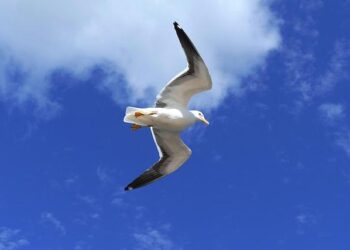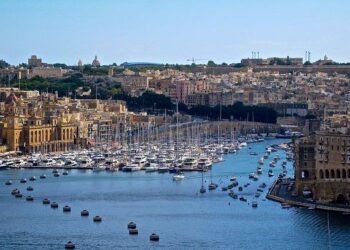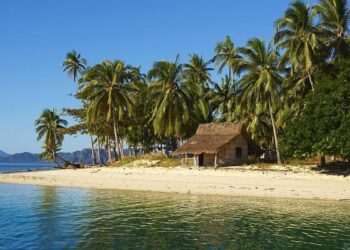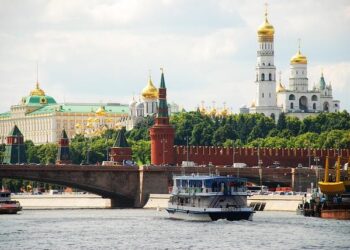A recent Finnish study has unveiled surprising insights into the secrets of longevity, challenging widely accepted principles associated with the world’s renowned Blue Zones. While these regions are often celebrated for their common lifestyle and dietary habits that promote extended lifespans, Finland’s longest-lived area appears to defy these norms. The findings, published in a new report, shed light on unique factors contributing to exceptional longevity in this northern European region, prompting a reevaluation of what truly drives a long and healthy life.
Finnish Study Challenges Conventional Wisdom Behind Longevity in Blue Zones
Recent research conducted in Finland has upended long-held assumptions about the factors contributing to exceptional longevity typically observed in so-called Blue Zones-regions where inhabitants live significantly longer than average. Contrary to popular belief, Finnish seniors do not necessarily adhere to the widely accepted lifestyle traits such as plant-based diets, strong social connections, or low-stress environments. Instead, this comprehensive study highlights a unique confluence of genetic resilience, environmental adaptation, and culturally embedded habits that play a decisive role in the region’s life expectancy.
Key findings from the study include:
- Genetic markers: Distinct genetic variations linked to improved metabolic health and disease resistance.
- Climate adaptation: Physiological and behavioral adjustments to cold weather contributing to immune system robustness.
- Diet diversity: A flexible diet including both traditional Finnish foods and modern elements, rather than strictly plant-based meals.
- Physical activity: Routine, naturally integrated movement through everyday chores and outdoor work, rather than prescribed exercise.
| Longevity Factor | Blue Zones | Finnish Study Findings |
|---|---|---|
| Diet | Mostly plant-based, low meat consumption | Mixed diet, including fish and dairy |
| Social Structure | Strong, close-knit communities | Smaller social circles, but high community resilience |
| Activity | Moderate, intentional physical activity | Naturally integrated, daily physical tasks |
| Stress Management | Meditative and low-stress lifestyles | Acceptance and adaptation to seasonal challenges |
Unique Lifestyle Factors Drive Exceptional Lifespan in Finnish Region
Contrary to the widely celebrated Blue Zones-regions globally known for their extraordinary longevity due to common lifestyle traits-the Finnish region bucks the trend with distinct cultural and environmental influences driving its residents’ exceptional lifespan. Researchers highlight that the area’s combination of cold climate adaptations, a diet rich in locally sourced foods, and unique social frameworks foster resilience and extend healthspan. These factors form a lifestyle mosaic rarely seen in other longevity hotspots, emphasizing the importance of tailoring health strategies to local contexts.
Several elements set the region apart, including subtle yet impactful daily practices and societal norms. These include:
- Frequent sauna use, promoting cardiovascular health and stress relief
- Integral community participation, which strengthens social bonds and mental well-being
- Consumption of rye bread and berry-rich diets, known for anti-inflammatory properties
- Outdoor activity routines, even in harsh winters, fostering physical endurance
| Factor | Impact on Longevity |
|---|---|
| Sauna Frequency | Improves heart health, reduces inflammation |
| Community Engagement | Enhances mental health, resilience |
| Local Diet | Rich in antioxidants, supports immune system |
| Outdoor Activities | Boosts physical fitness, vitamin D levels |
Experts Suggest Tailored Health Strategies Based on Regional Longevity Insights
Recent findings from Finland challenge conventional longevity paradigms commonly seen in Blue Zones, suggesting that health strategies must be adapted to the unique environmental, social, and genetic contexts of each region. Experts emphasize that a one-size-fits-all approach overlooks critical local factors influencing lifespan, from diet and physical activity to community bonds and healthcare accessibility. Tailored interventions could better address these variables, fostering more effective public health policies and enhancing quality of life for aging populations across diverse geographies.
Key regional factors identified include:
- Seasonal dietary patterns: Incorporation of native foods rich in omega-3 and antioxidants.
- Physical activity routines: Adaptations to climate-driven outdoor exercise habits.
- Social connectivity: Community-based support systems aligned with local customs.
- Healthcare integration: Personalized preventive care leveraging regional epidemiology data.
| Factor | Blue Zone Typical | Finnish Region Adaptation |
|---|---|---|
| Diet Composition | Plant-based, Mediterranean | Fish-rich, berry supplementation |
| Physical Activity | Moderate daily movement | Seasonal outdoor endurance |
| Social Interaction | Close-knit communities | Hybrid traditional-modern networks |
In Conclusion
The Finnish study challenges conventional wisdom surrounding longevity by revealing that the factors contributing to the exceptional lifespan in one of the world’s longest-lived regions diverge significantly from the established Blue Zone criteria. These findings not only broaden the scientific understanding of aging but also underscore the importance of considering local cultural, environmental, and genetic influences when exploring how to promote healthier, longer lives. As researchers continue to unravel the complex interplay behind longevity, this study serves as a reminder that there is no one-size-fits-all formula for living longer-highlighting the need for tailored approaches in public health strategies worldwide.















